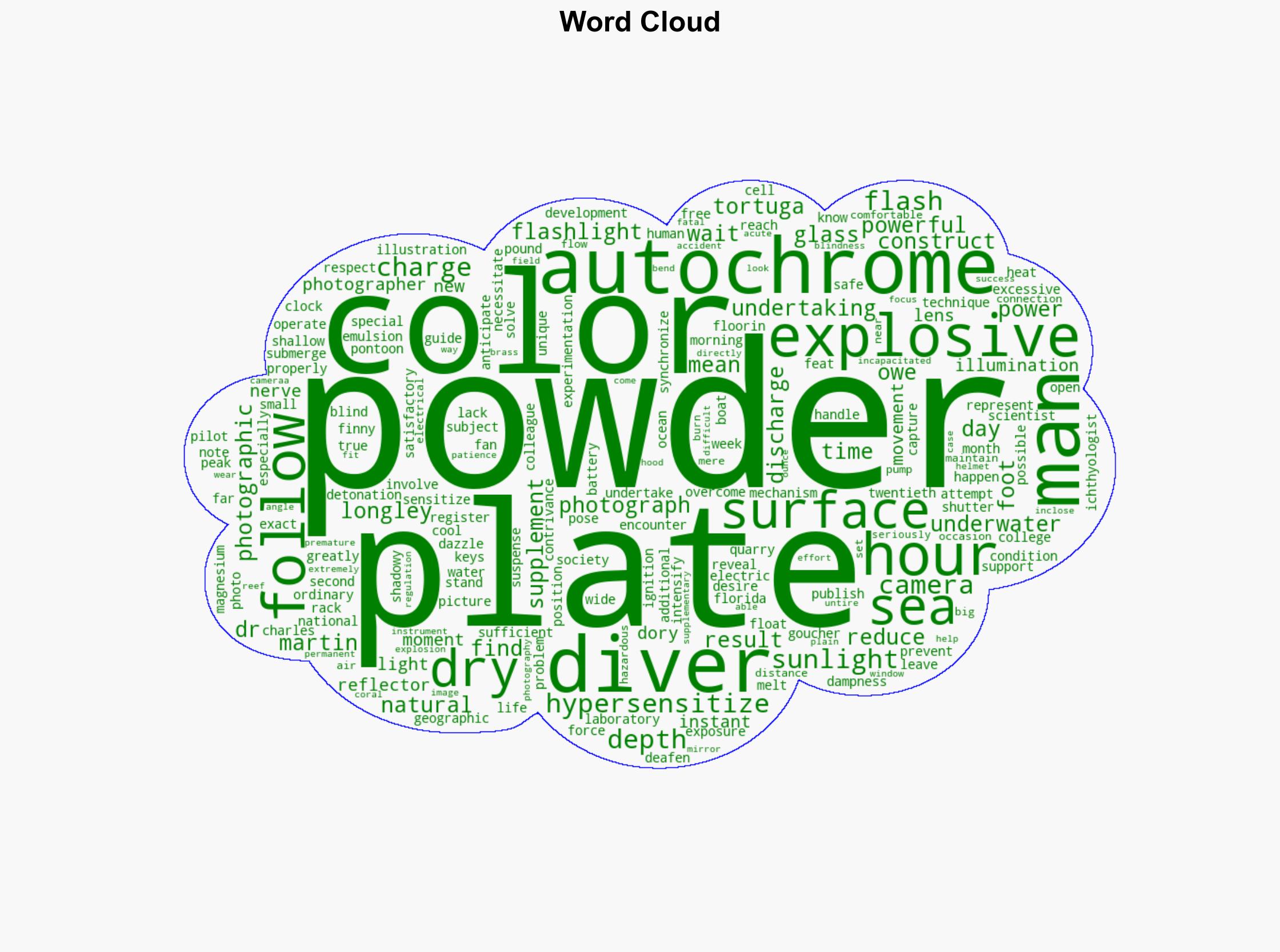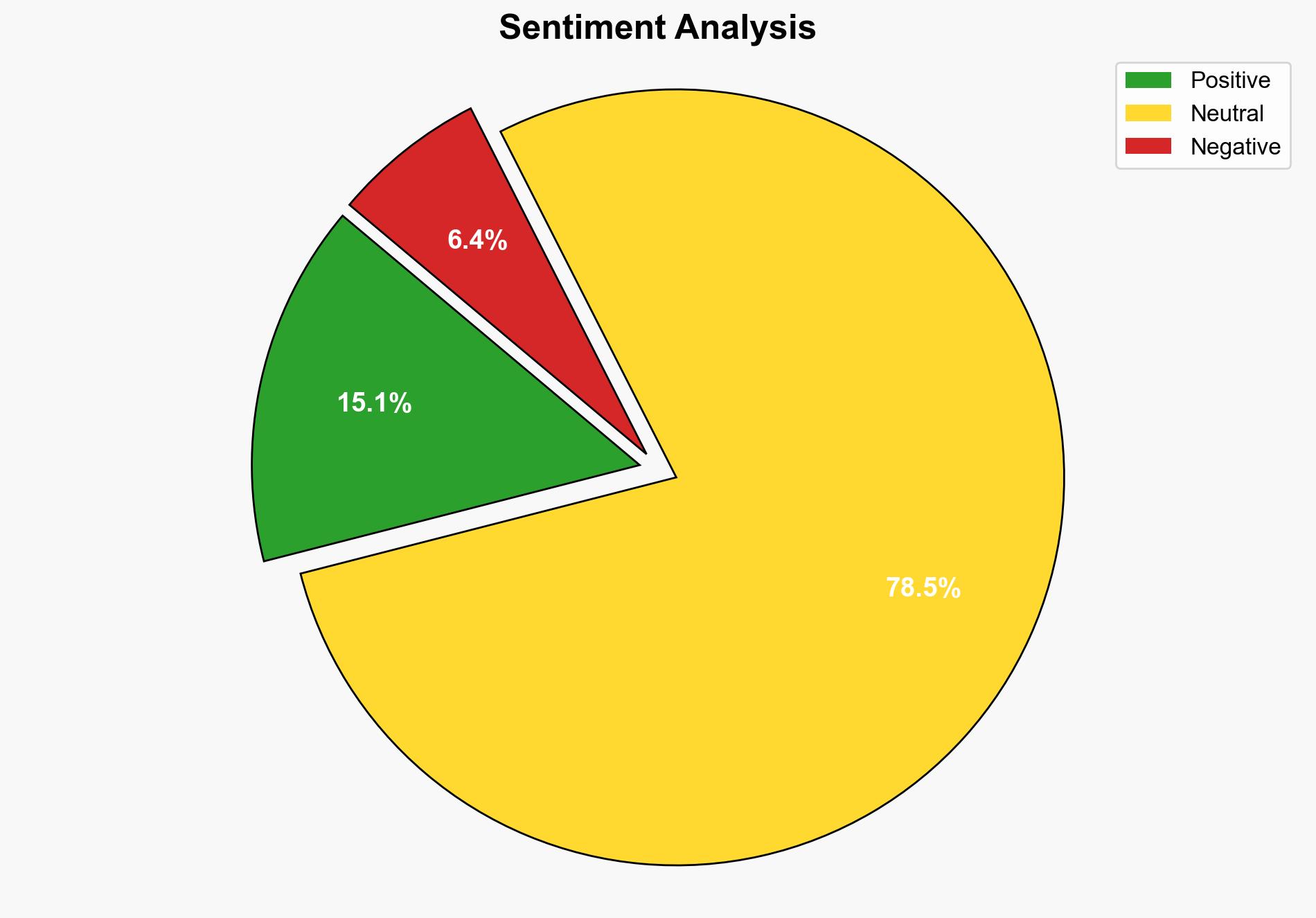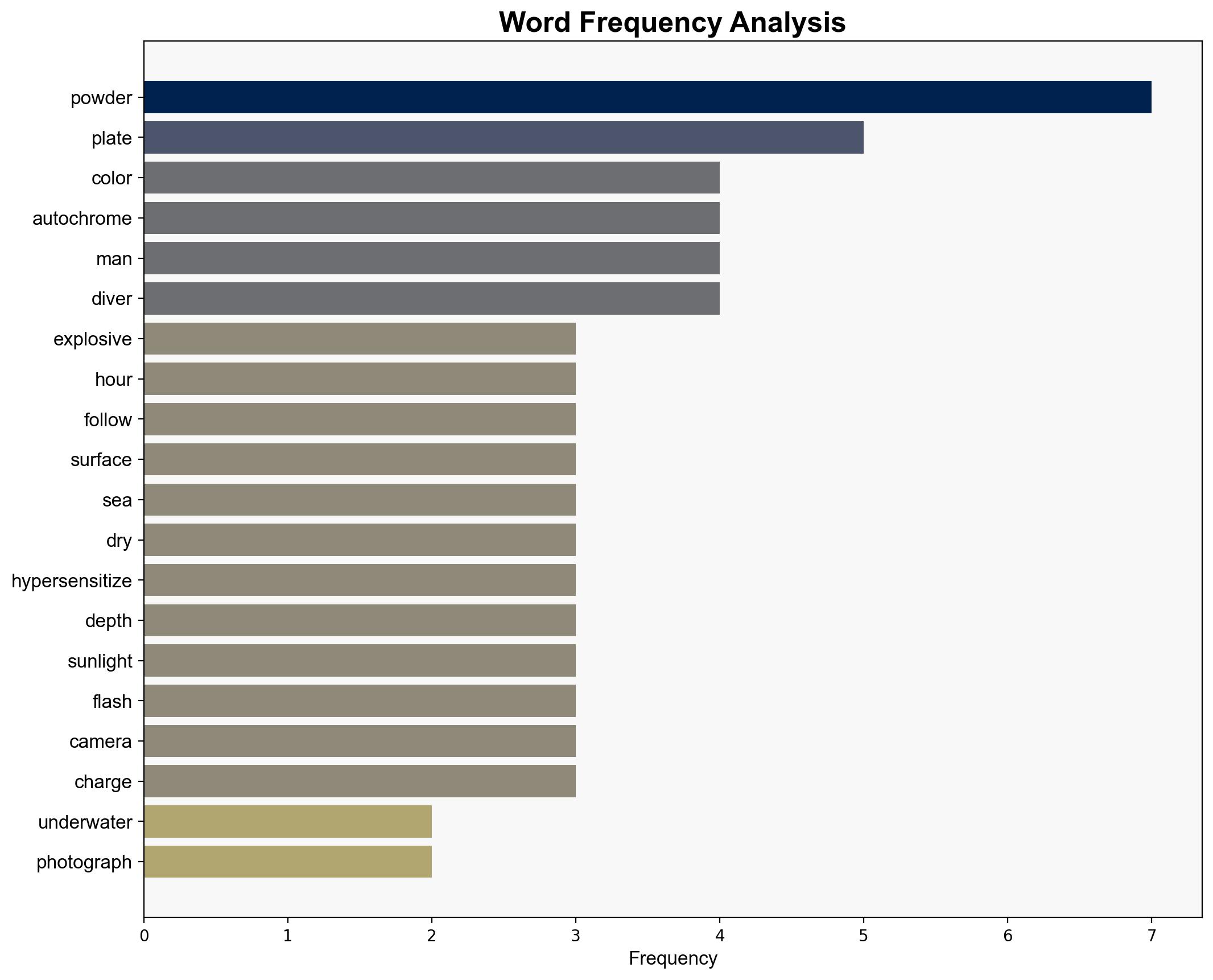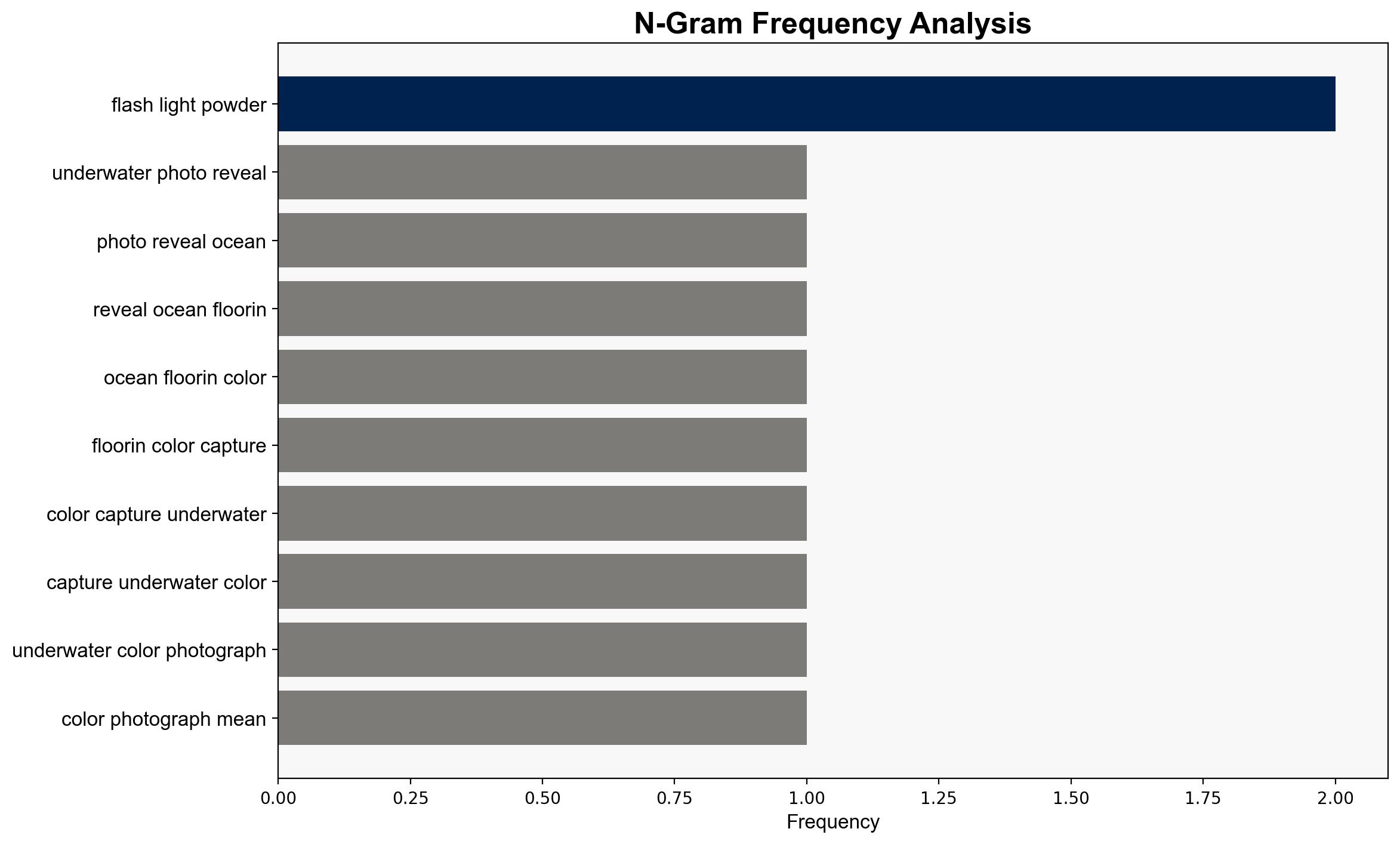These were the first underwater photos to reveal the ocean floorin full color – National Geographic
Published on: 2025-11-10
Intelligence Report: These were the first underwater photos to reveal the ocean floor in full color – National Geographic
1. BLUF (Bottom Line Up Front)
The analysis explores the pioneering efforts in underwater color photography, highlighting both technical achievements and potential risks associated with the methods used. The most supported hypothesis suggests that the innovation was driven by scientific curiosity and technological advancement, despite inherent risks. Confidence level is moderate due to the historical context and limited data on safety protocols. Recommended action includes further investigation into historical safety practices and technological evolution in underwater photography.
2. Competing Hypotheses
1. **Hypothesis A**: The primary motivation for developing underwater color photography was scientific advancement and exploration of marine life, driven by technological innovation and curiosity.
2. **Hypothesis B**: The development was primarily driven by competitive pressures and the desire for prestige within the scientific community and media outlets, potentially compromising safety for groundbreaking results.
Using ACH 2.0, Hypothesis A is better supported by the detailed description of technical challenges and solutions, indicating a focus on overcoming scientific hurdles rather than external pressures.
3. Key Assumptions and Red Flags
– **Assumptions**: It is assumed that the primary goal was scientific exploration rather than commercial gain. The narrative suggests a focus on overcoming technical challenges, but lacks explicit mention of safety protocols.
– **Red Flags**: The use of powerful explosives and the mention of serious injuries raise concerns about the safety measures in place. The absence of detailed safety protocols is a significant blind spot.
4. Implications and Strategic Risks
The pioneering work in underwater photography has implications for modern scientific exploration and technological development. However, the historical use of hazardous methods poses questions about the evolution of safety standards. Potential risks include the perpetuation of unsafe practices in pursuit of innovation. The narrative also highlights the psychological and physical toll on individuals involved, suggesting a need for balanced risk assessment in scientific endeavors.
5. Recommendations and Outlook
- Investigate historical safety practices in underwater photography to inform current standards and prevent similar risks.
- Encourage documentation and transparency in scientific innovations to balance risk and reward.
- Scenario-based projections:
- Best: Adoption of safer, more efficient technologies in underwater exploration.
- Worst: Continued use of hazardous methods leading to accidents and setbacks.
- Most Likely: Gradual improvement in safety standards as technology evolves.
6. Key Individuals and Entities
– Dr. Longley
– Charles Martin
7. Thematic Tags
scientific innovation, technological advancement, safety standards, historical analysis





